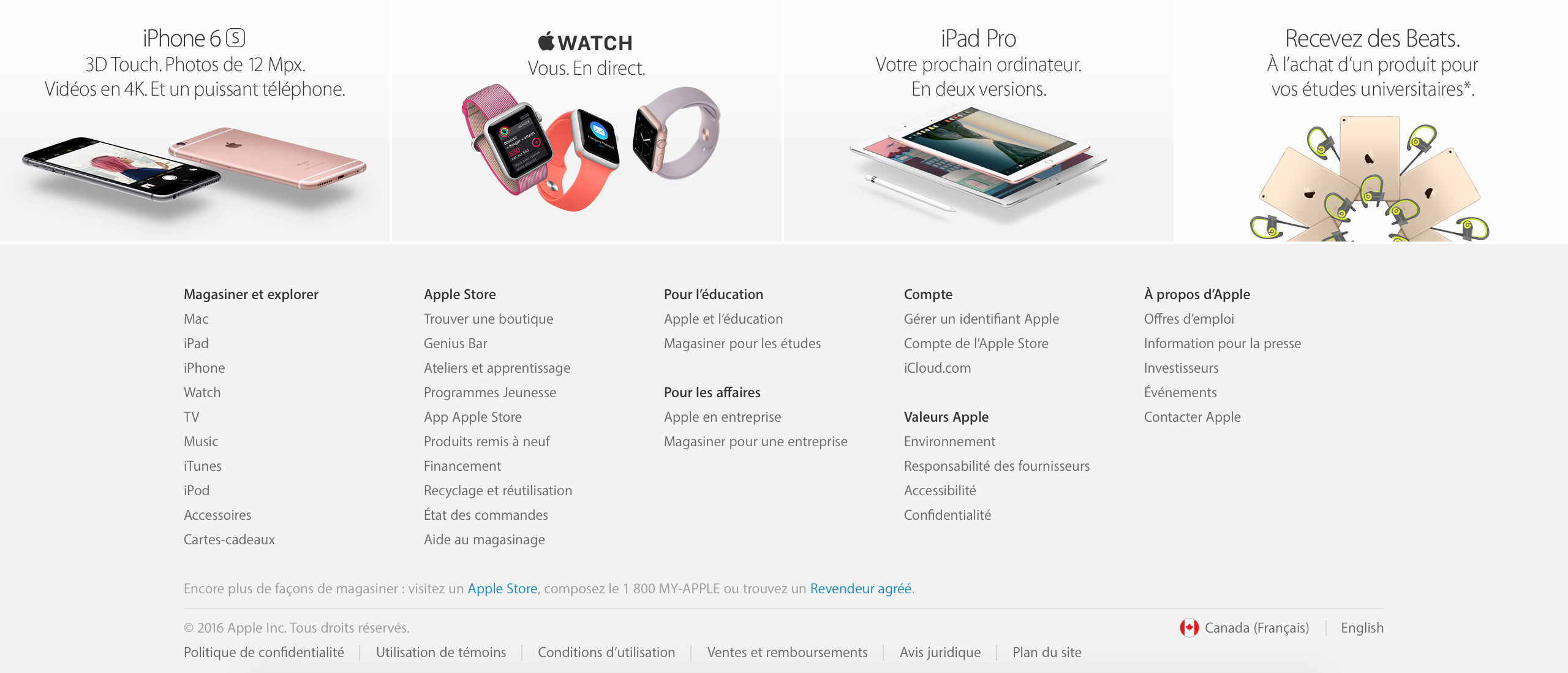Localising sites within a locality (Canada)
Business is all about the people. When you set up an organization globally, you cannot expect people to visit your website and turn out to be customers if your product is only available in one language and does not “speak to them”. Bridging that language gap is where localisation, the process of adapting a product to a specific audience and its locality, has its importance.
In countries such as Canada, where there is not only one official language but two, English and Canadian French, this is even more important. And this is even more true as in the province of Québec you are required by law to support French (both online and offline). French is the native language of about 7.3 million Canadians (which represent 22% of the Canadian population) and most of Canada’s French speakers live in Québec.
Canadian French and European French are quite different. That is mostly because the Canadian version of the French language has kept influences from the 17th century and from English-speaking countries such as Canada’s neighbor, the United States of America. Here are some examples:
European French
Aller se promener
C’est logique
Pastèque
Peindre
Voiture
Canadian French
Prendre une marche
Ca fait du sens
Melon d’eau
Painturer
Char
English
To take a walk
It makes sense
Watermelon
To paint
Car
Even if the Canadian French language has been influenced by English-speaking countries, it is interesting to notice how many English terms are used in European French nowadays while Canadian French would rather keep French words to express that same term. For example:
European French
Airbag
Faire du shopping
Parking
Stop
Week-end
Canadian French
Coussin gonflable
Magasiner
Stationnement
Arrêt
Fin de semaine
English
Airbag
To go shopping
Parking lot
Stop (sign)
Weekend
When your product is already in English and you plan on taking over the Canadian market, it is important to think about the second official language of the country. If your product has already been localized for the French market (using European French), you might think it is easier to just offer this version to Canadian French speakers. Even if this might be an easier and cheaper option, as European French and Canadian French are a bit different, they will know some terms were not translated for their market, and they may be offended. Of course, they will understand what you offer and how to use your product but a language is meant to be understandable, not offensive.
Another thing to keep in mind when localizing your website for the Canadian audience, the cultural differences between Canada and France are not just based on different terms used in their language. Holidays can be different or celebrated on different days. For example, thanksgiving is not celebrated in France and mother’s day is not celebrated on the same day in Canada as it is in France. This can impact the way you are going to localize your product.
To show how the differences developed above are adapted differently on localized version of a website in Canadian French and European French, here are some screenshots of different websites:
Amazon.com/ca and Amazon.com/fr
The first image below shows Canadian french words which would not be used in the European French. The Canadian equivalent is shown in the second image.


Apple.com/ca/fr and Apple.com/fr
Likewise with Apple, the first image includes different localised content to the second image.



